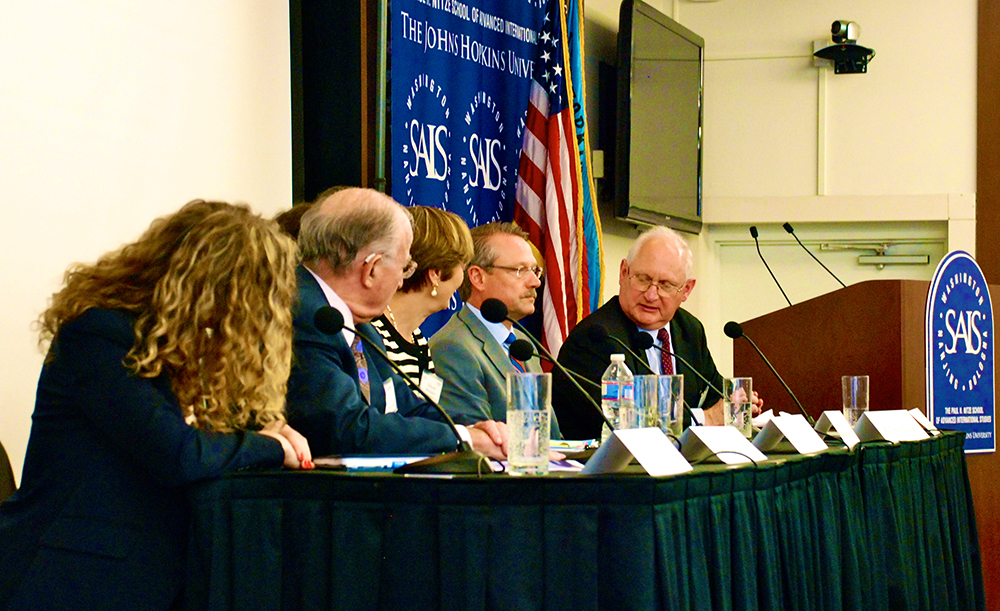
Economists and industry leaders met to discuss global food security and the role of the United States.
WASHINGTON – While the U.S. ranks first in global food security, experts on Tuesday warned that significant food challenges are coming.
“We are facing an unprecedented task – how we are going to feed the world over the next 50 years,” said Paul Schickler, president of DuPont Pioneer, the largest producer of hybrid seeds for agriculture in the U.S.
Schickler was referring to a report by the United Nations Department of Economic and Social Affairs projecting the world’s population will increase by more than 2 billion people by 2050, to 9.3 billion people worldwide.
John Hopkins University scholar Robert L. Thompson, was more specific: “We’re going to have to increase world food production by 60, perhaps 70 percent.”
The warnings came from to a panel of industry leaders and economists organized by John Hopkins. They warned that while America’s scores top the food security index of 105 countries with a score of 89.6 – followed closely by Norway, 88.6, and Denmark, 87.9 – all is not perfect.
Americans are not eating well nutritionally and agricultural research, a major driver of American food safety in the past, has been stagnant.
“The quality of the food, the nutrients of the food, the protein in the food is not actually terribly good in a lot of wealthy countries, including this one,” said Leo Abruzzese, editorial director of the Economist Intelligence Unit, the research arm of the group that publishes The Economist.
According to health and nutrition statistics released by the U.S. Census Bureau, the consumption of nutrients vital for development, like Vitamin A and Vitamin C, have reduced drastically since the 1970s and 80s, in part due to soil nutrient depletion.
“I’m not sure if that’s the junk food phenomenon, but it’s certainly something,” Abruzzese said.
Schickler agreed that having adequate food supplies wasn’t enough. “High quality food is what counts,” he said.
“All forms of production are going to be necessary to solve our issues and enable consumer choice in the future,” Schickler said. He pointed to a coordinated effort between small, large, commercial, and organic farms to restore micronutrients like iron and vitamin A, deficiencies that go all the way back to the soil food is planted in.
According to Schickler and Abruzzese, another weakness of agriculture in the U.S. is the current state of research and development. The nation currently scores 87.5 on public expenditures on R&D. Norway and Denmark, which rank No. 2 and No. 3 on the index, have a score of 100 in that category.
“The level of investment going into agricultural technology seems to be stagnating,” Abruzzese said.
The U.S. has historically relied on the strength of its agricultural public research, but according to Schickler, times have changed.
“My concern would be that we have fallen off of the pace of investing in public agriculture research. That is something that the public industry is pushing hard to get back to those levels — levels that really enable the United States to be where it is today.”
Schickler said public funding is key to restoring progress in agricultural research and development.
“Fiscal and budget challenges are impacting all aspects of government and public support. As a result we’ve let support for agricultural research suffer over the last two decades,” he said, “It’s crucial for us to get that back.”
